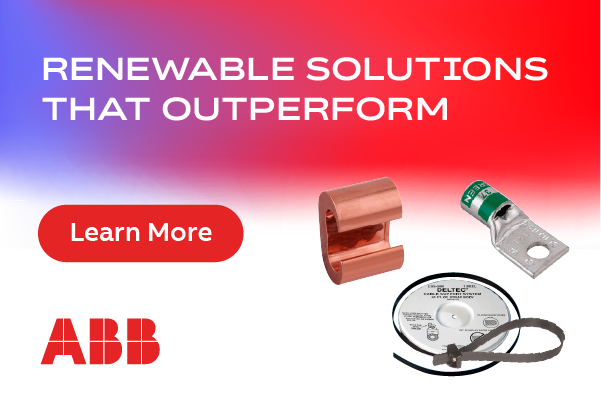Enabling Life Extension
Computational modeling catches failures before sensors
 Wind turbines often operate in harsh, volatile environments due to the unsteady nature of wind. Temperature extremes, humidity, and/or dusty air all amount to unpredictable and strenuous conditions that must be endured by the wind turbine gearbox. For this reason, key turbine components like the bearings and gears in the gearbox are prone to premature failure. Unplanned repairs to these failed components drive up operations and maintenance costs and the levelized cost of wind energy. Finding ways to mitigate those failures is therefore crucial to the sustainability of wind as an energy source.
Wind turbines often operate in harsh, volatile environments due to the unsteady nature of wind. Temperature extremes, humidity, and/or dusty air all amount to unpredictable and strenuous conditions that must be endured by the wind turbine gearbox. For this reason, key turbine components like the bearings and gears in the gearbox are prone to premature failure. Unplanned repairs to these failed components drive up operations and maintenance costs and the levelized cost of wind energy. Finding ways to mitigate those failures is therefore crucial to the sustainability of wind as an energy source.
A wind turbine gearbox is typically designed to last 20 years, but in practice usually needs to be replaced every 6-8 years. This can cost between $200,000 and $350,000 for 1.5MW gearboxes and double to triple that amount for 2.5MW machines, not including the cost of the crane and revenue loss due to prolonged asset downtime. Many operators have turned to "big data" to "predict" when maintenance should be scheduled in an effort to mitigate unplanned outages. Scheduling maintenance based on presumptions made from large datasets often causes unnecessary expense in replacing components too early, or on the contrary, results in missed failures that lead to catastrophic damage and prolonged asset downtime. Investments made in condition-based monitoring systems and sensors are also often used to alert the operator when failures occur. While useful tools, they only alert operators to end of life failures. Once a vibration is detected, the technician is in corrective maintenance mode, making it too late to do preventative maintenance.
A new monitoring approach, which combines small data with material science, has recently entered the market. The process uses fundamental physics combined with the standard SCADA data feed from each turbine to accurately predict the life of the gearbox and key components from 0-30 years without the use of extra sensors and big data. The computational testing software builds digital models of the gearbox and key components based on the material DNA and the components' microgeometries and operating conditions to determine the impacts on component life. High performance computers simulate the models' operational performance under representative operating conditions and applies a large volume of hypothetical scenarios to detect the earliest point in time that cracks initiate at the microstructural level.
Having accurate information on how a component will fail, and even better, when it will fail, months and years in advance affords operators the ability to schedule up-tower component replacements and other maintenance operations in a proactive manner as opposed to a reactive manner, which is the case when using big data and sensors. Knowing the failure rates of the gearbox components, main bearings, pitch bearings, and soon to be blades by using computational testing allows for accurate predictive data to be available on high value systems. This enables operators to build multi-year budgets, forecast maintenance and replacements, and simulate how a de-rate or uprate impacts the life extension of unique assets. Eventually, a digital model of the entire wind turbine will be available accounting for both long and short term failure predictions to optimize both operations and asset management.
 Computational testing using material science-based prognostics can help an operator prevent failures by knowing the component has early crack initiation long before a sensor can detect it. The software continually monitors the asset's gearbox and key components and simulates each site location's operating conditions to provide a "watch list" ranking from worst to best, updating the operator of any changes in life.
Computational testing using material science-based prognostics can help an operator prevent failures by knowing the component has early crack initiation long before a sensor can detect it. The software continually monitors the asset's gearbox and key components and simulates each site location's operating conditions to provide a "watch list" ranking from worst to best, updating the operator of any changes in life.
With the amount of lead time given, operators can now source from suppliers based on component life rather than purchasing parts solely because of cost or that it was on the OEM's "supplier-approved" list. The operator now has the ability to see side by side life comparisons offered from different supplier products and simulate how those components would operate at the site under its unique loading conditions.
Computational testing provides insight into how choosing a part or service with a longer life prediction could help achieve gearbox life extension. On the other hand, it could also help an operator choose a part with a lower life prediction in instances where a core part of the gearbox is expected to fail within a short timeframe. The operator would choose a component with a shorter life and for less cost to keep the asset operational until the gearbox needed to be fully replaced.
Suppliers are also starting to use the software to forecast where and when uptower component replacements will be needed in the field. The dashboard provides visibility into how their products are performing and displays an anonymized forecast into where the sales opportunities are located within the operator network and when the parts and services will be needed.

Dr. Elon Terrell is a computational tribologist at Sentient Science.
Sentient Science | www.sentientscience.com
Volume: 2016 July/August









